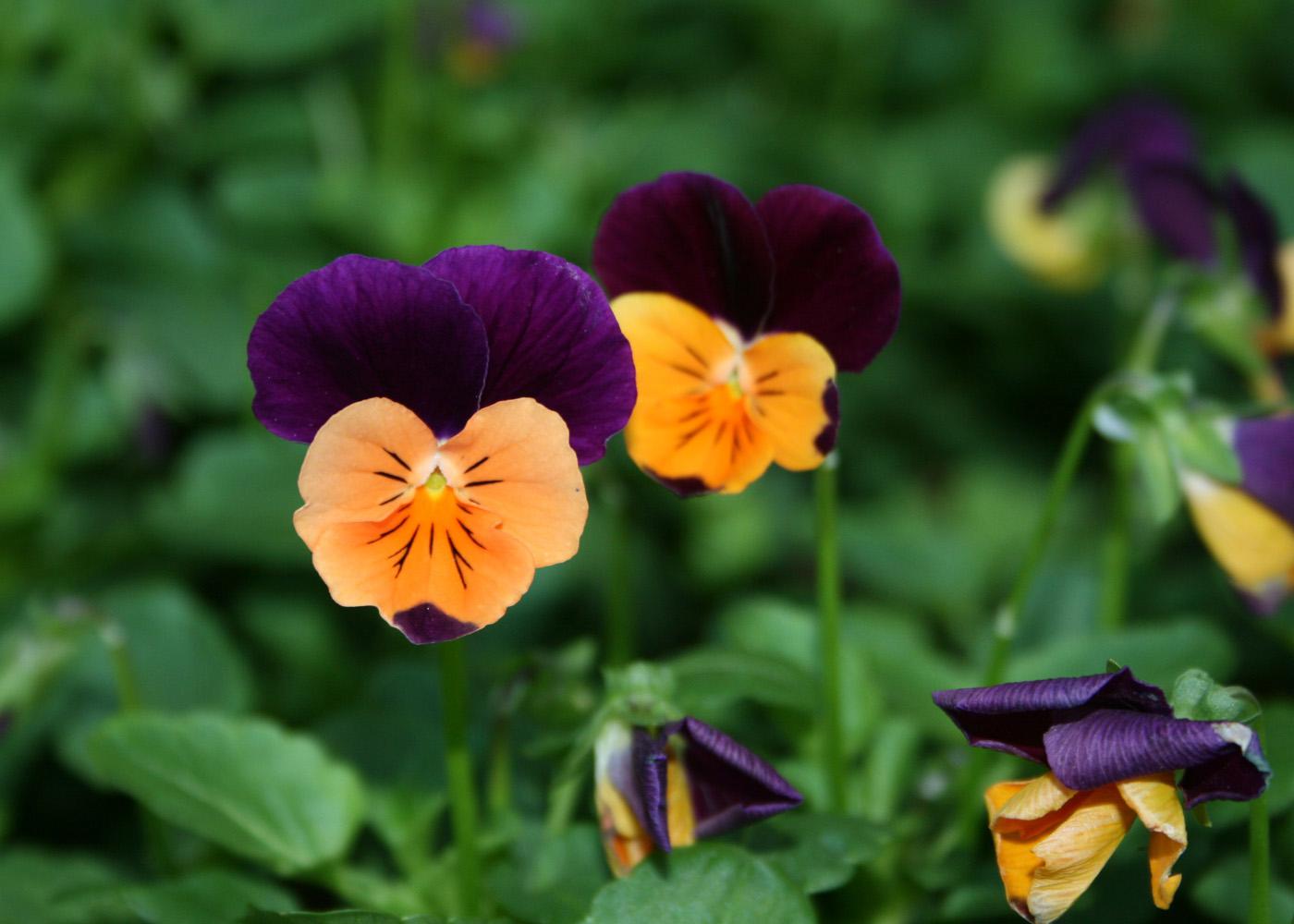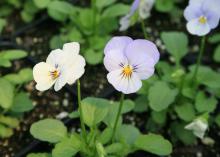Information Possibly Outdated
The information presented on this page was originally released on November 10, 2010. It may not be outdated, but please search our site for more current information. If you plan to quote or reference this information in a publication, please check with the Extension specialist or author before proceeding.
Violas thrive in winter landscapes, containers
When you consider that violas tolerate winter weather and can thrive in both the landscape and containers, it is no wonder they are a favorite bedding plant for Mississippi gardeners.
The viola, which is related to the pansy, will grow from Thanksgiving to Easter and beyond. In fact, violas are often more hardy than pansies.
Violas are known botanically as Viola cornuta but are commonly called Johnny Jump Ups. They are prolific seed producers, and it is quite common for viola to act as a perennial in the home garden.
Garden centers carry quite a selection of violas right now. The colors seem to be endless in variety.
One of the newer offerings is the Penny viola family. The Penny Citrus mix is a prolific flower producer. The flowers are larger than the normal viola and produced in prolific numbers. The flowers are displayed high above the compact, lush, green foliage in a way that begs for attention.
Penny Citrus plants are 4 to 6 inches tall and wide. Flower colors include cream, orange, primrose, yellow and yellow frost.
I really like the Penny Azure, which is a gorgeous white and bright blue flower with purple streaks. The color of the flower starts off as light blue and then transitions to bright blue.
The Sorbet series is another good choice that performs well in the landscape or container. With its seemingly limitless selections of colors, you can’t go wrong with Sorbet viola.
Violas will grow best in consistently moist, well-drained soil. Amend the soil with good, composted organic matter before planting. Violas prefer growing in full sun.
For best performance now and in the spring, plant violas before cold weather sets in. This allows the roots system to become established. Apply a layer of mulch to help with overwintering. This extra layer of protection is especially important in north Mississippi.
Keep the soil nutrition at optimum levels to ensure that the violas will keep blooming throughout the growing season. Add a pound of good, slow-release fertilizer for each 100 square feet of garden bed. I recommend you have your soil tested and amend it as recommended. Violas provide the best flower show with soil pH at 5.8 and below.
There is nothing lonelier than a viola planted by itself in a big flower bed. For the best landscape performance and display, always plant viola in big masses. Remember that most violas will only spread up to 6 inches, so it is important to space them properly. Plant violas in the landscape 6 inches apart.
Did you know that viola flowers are edible? Both the leaves and flowers of pansies and violas are edible and high in vitamins A and C. The flowers have a strong flavor and make beautiful garnishes for salad and fruit plates.
Plant some of these cool season wonders this weekend and enjoy their flowering show.









